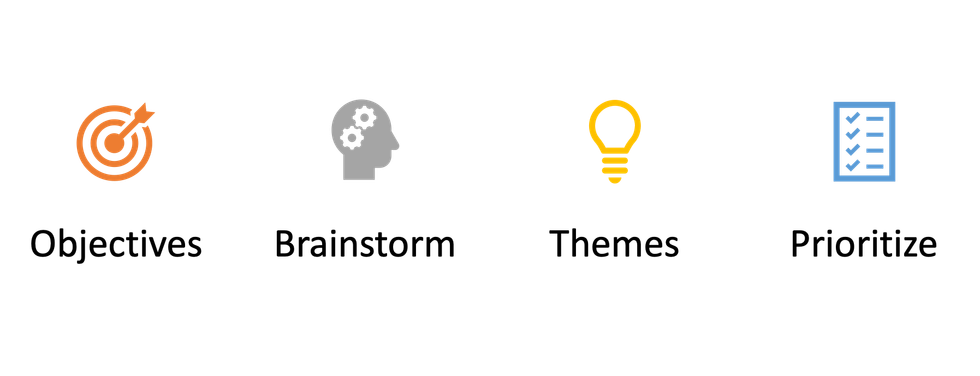
In this article, I'll provide you with an analysis user guide, complete with templates and examples and, most importantly, how to leverage this analysis during your strategic plans.
What Analysis Tools Should I Use?

There are tons of business analysis models that can help you better understand your business, but some of the most effective ones are the SWOT and PESTLE strategic analysis models.
SWOT stands for:
- Strengths - maintain
- Weakness - remedy
- Opportunities - exploit
- Threats - counter
INTERNAL FACTORS
Strengths and weaknesses represent your company's internal environment—things that are happening now. They represent things that you have control over and can change.
EXTERNAL FACTORS
Opportunities and threats represent your company's external environment—things that are happening in the future. They are things going on outside of your company and are not something you can control or change.
A PESTLE analysis can be done in conjunction with a SWOT to more deeply analyze the external section in the SWOT. It is more valuable than SWOT for longer term strategic plans. PESTLE stands for Political, Economic, Social, Technological, Legal, and Environmental.
- POLITICAL: Government policy, corruption levels, trade controls, import and export restrictions, taxation changes
- ECONOMIC: Exchange rates, disposable income levels, interest rates, unemployment rates, wealth distribution
- SOCIAL: Education levels, population growth rate, religious harmony, attitude towards health, social welfare programs, generational shifts
- TECHNOLOGICAL: New technology considerations, internet penetration, access to basic infrastructure, software privacy, technology competency of workforce
- LEGAL: Tax laws and regulations, labor laws and firing policies, copyright and anti-piracy laws
- ENVIRONMENTAL: Weather patterns, attitude towards recycling, attitude towards organic and green products
Why Do This Type Of Analysis?

It's important to understand the factors influencing your business's performance and this is where a SWOT and PESTLE analysis comes in. Here are some valuable insights that these tools can provide:
- One of the most effective methods in developing a strategic plan
- Provides an understanding of the health of your organization
- Delivers a 360-degree view of your company's strategic position
- Establishes priorities for action
- Identifies opportunities to explore
- Identifies risks to solve and/or develop contingency plans for
- Offers greater engagement and buy-in leading to a more motivated team
How To Conduct An Effective Analysis

To create the most effective, objective, and accurate analysis, here are the following best practices:
- DEFINE OBJECTIVES: It's important to state the objectives of the analysis so everyone is aligned and outline a clear timeframe.
- BRAINSTORM: This is an opportunity to bring your team together, encourage engagement, and participation in your company's resulting strategy. Focus on encouraging collaboration and promoting conversations. Here are more ideas on how to conduct an effective brainstorm session: https://www.workitdaily.com/developing-brand-values/brainstorm.
- IDENTIFY THEMES: Here you will want to bring all of the ideas together to identify similar themes.
- PRIORITIZE: Create a final list for each category in order of highest priority to lowest.
A few other best practices to keep in mind: rely on facts not opinions, be specific, and clearly define your statements.
Developing Strategies From Your Analysis

You've completed your SWOT and PESTLE analysis, now what? It's time to turn these analyses into strategies for your business. One way to do this is to see how to take advantage of opportunities, reduce threats, overcome weaknesses, and exploit any strengths. The way to do this is through a TOWS analysis (Threats, Opportunities, Weaknesses, and Strengths).
- Strengths - Opportunities Strategies (SO): Look at each strength (identified in the SWOT/PESTLE analysis) against each of the opportunities to determine how the strength can help you maximize the opportunities.
- Strengths - Threats Strategies (ST): Look at the strength (identified in the SWOT/PESTLE analysis) against each of the threats to determine how the strength can help minimize (or even avoid altogether) the threat.
Continue this process using the opportunities you identified to develop strategies that will minimize weaknesses (Weaknesses - Opportunities Strategies [WO]) or avoid the threats (Weaknesses - Threats Strategies [WT]).
Here is a TOWS analysis template that can be downloaded to get you started.
At this point, you have a solid foundation of analysis with key strategies to start building your strategic plans in order to drive your success for your business. You've got this!
If you need additional ideas on how to leverage analysis for your strategic planning process, I'd love to hear from you. You can find me on LinkedIn at https://www.linkedin.com/in/lisaperrymarketing/.
- 3 Tips To Adapt Your Marketing Strategy During COVID-19 - Work It ... ›
- How Executives Can Use Failure To Their Advantage - Work It Daily ›
- 7 Marketing Resume Mistakes To Avoid - Work It Daily ›

 Bigstock
Bigstock Bigstock
Bigstock Bigstock
Bigstock


